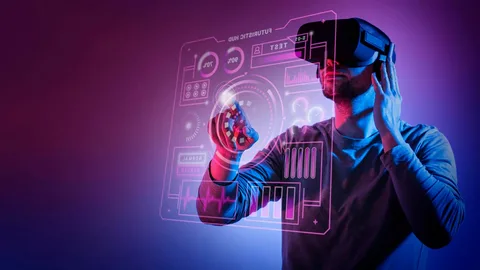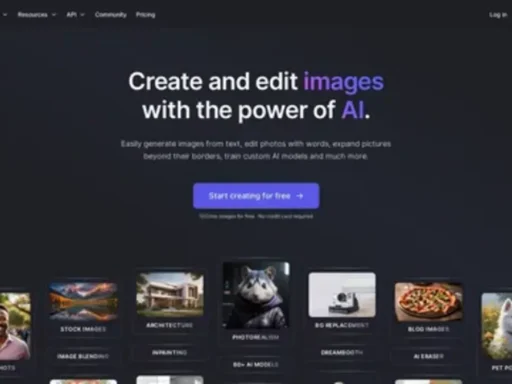Ever felt like every time you blink, artificial intelligence takes another quantum leap? If you’re a business leader or even just someone trying to keep up with new tech lingo at dinner parties, you know it’s impossible to ignore what’s happening in AI right now. We’re hearing everything from “Generative AI will make your job easier” to “Cybersecurity threats are evolving faster than ever.” But how do these trends actually impact your day-to-day—or shape big decisions in your company?
Let’s put away the jargon and zero in on what really matters as we head into 2025. In this post, I’ll break down the Top 9 AI Trends 2025—what’s real, what’s hype, and most importantly, what’s actionable—based on data from Gartner, McKinsey Global Institute studies, Forrester research papers and more.
Ready to see how smarter machines might be good news (not just scary headlines)? Let’s explore why these trends aren’t just buzzwords—they’re blueprints for success if you know where to look.
Introduction To Ai Trends 2025
Still wondering why there’s so much noise around these shifts? It all comes down to relevance—and not just for giant corporations with deep pockets. Whether you’re running a small business or tracking trends for your next side hustle idea, understanding what’s coming puts you one step ahead of competitors who treat AI as background noise.
AI can help save costs through automation but also spark brand-new revenue streams nobody saw coming five years ago. Keeping an eye on these emerging patterns means less scrambling when regulations change (as they surely will) or when customers start expecting more personalization than ever before.
Generative Ai Dominance And Specialization
- If you’ve experimented with image generators or voice assistants lately—congratulations! You’ve met generative AI up close.
- This year marks a shift: those dazzling general-purpose tools are getting laser-focused on specific industries.
Across sectors like healthcare and software development, tailored generative models are accelerating innovation beyond what anyone predicted back in early GPT days. For example: pharmaceutical companies now use custom-trained systems to suggest molecular structures—a process that once took teams months can now happen in hours (Nature Biotechnology backs this up).
In retail marketing departments everywhere, personalized ad copy isn’t crafted word-by-word by humans—it’s spun up instantly based on customer behavior patterns tracked across devices (VentureBeat offers some fun stories here). Even code-writing platforms inspired by GitHub Copilot are reshaping how developers solve tough problems under tight deadlines.
| Industry Focus | Example Application |
|---|---|
| Pharmaceuticals | Drug candidate design using specialized generative models |
| Software Development | Semi-automated coding suggestions tailored per project needs |
| Marketing & Retail | Dynamically generated customer emails & product descriptions |
| Media & Content Creation | Instant video scripts and storyboards tuned for target audiences |
Now let’s talk money—for a moment! According to McKinsey Global Institute projections highlighted last fall (and quoted almost everywhere), generative AI could pump trillions into global GDP annually within two years. Gartner adds that by 2025 this flavor of AI will create ten times more data than was possible only half a decade ago.
What does this mean if you’re steering strategy? Generative models don’t just automate tasks—they open doors no human-only team could manage at scale:
- Create hyper-personalized experiences without blowing budgets.
- Pioneer entirely new services based on rapid experimentation.
- Dramatically shorten R&D cycles—in pharma especially—to reach market first.
- Tame repetitive work while unlocking creative problem-solving time for teams.
For businesses ready to invest smartly—not simply chase headlines—the next wave of generative AI promises both efficiency and surprise breakthroughs.
Ai-Powered Cybersecurity
The excitement around smarter technology comes with its own set of headaches—cybercriminals aren’t slouches either. As hackers get bolder (think phishing scams fueled by their own bots), traditional defenses often feel like bringing a water gun to a wildfire.
But there’s good news—real-time threat detection is taking off thanks to machine learning algorithms that adapt faster than any script kiddie ever could. Forrester research highlights how next-gen SIEM systems (Security Information & Event Management) crunch millions of logs daily looking for telltale anomalies—a login at odd hours here; suspicious file access over there.
Here are some practical ways organizations are leveraging this trend:
- Behavioral analytics spots subtle red flags before breaches escalate.
- Automated response protocols patch vulnerabilities seconds after they’re spotted—not days later.
- Integrated threat hunting uses natural language processing so even junior analysts can launch complex investigations without wrestling command lines all day long.
So what should forward-thinking companies do besides cross their fingers?
– Invest early in platforms built around continuous learning—static rules miss evolving attacks.
– Train employees using simulations modeled after real-world incidents uncovered by these smart systems.
– Create feedback loops between IT staff and automated tools so false positives drop while true threats stand out quickly.
It turns out keeping pace with cyber threats doesn’t require paranoia—but it does demand that security evolves right alongside every other part of digital transformation.
With billions lost each year globally (as cited by Cybercrime Magazine), it’s not about “if,” but “when.” The smartest move is proactive adaptation—not reactive damage control—and that mindset may be your best firewall yet.
Edge AI Development
Wondering why your new smart fridge seems to think faster than last year’s phone? Or maybe you’re curious how self-driving cars react in a split second without phoning home to the cloud? That’s Edge AI flexing its muscle—and it’s on track to be one of the Top 9 AI Trends 2025. Let’s break down what makes it tick and where it’s quietly transforming life, sometimes right in your pocket.
Real-time Processing Benefits
Ever waited for your smart speaker to turn on a light but instead got that awkward “Hmm, something went wrong” delay? With Edge AI, that lag becomes history. By processing data directly on devices—think sensors in factories or even wearables—AI slashes response times dramatically.
This isn’t just about shaving off milliseconds; real-time edge processing means:
- No more annoying delays: Autonomous vehicles, like those from Tesla and Waymo, need instant reactions when spotting pedestrians—not a round-trip to some faraway server.
- Stronger privacy: Your health monitor keeps sensitive data local rather than uploading every heartbeat for analysis.
- Bigger energy savings: By reducing traffic between device and cloud, companies cut power use (and those cloud bills).
Picture assembly lines where AI spots defects as parts zip by, or cameras in stores flagging spills before someone slips. It all happens at the edge—quietly but quickly.
Industry Applications
Edge AI is no longer just tech-industry jargon—it’s showing up everywhere people want things done faster and smarter. Think about these examples:
In healthcare, portable diagnostic tools help doctors make spot decisions—even without stable internet connections. In manufacturing, predictive maintenance alerts workers moments before machines break down. And in retail? Smart shelves track inventory live, so employees refill only what customers actually buy.
Autonomous vehicles are probably the flashiest example. Here, hundreds of sensors process vision and LIDAR data locally so cars can brake or steer with lightning speed—a must-have for safety. Even city infrastructure is jumping onboard: smart streetlights adjust based on foot traffic thanks to edge-based intelligence.
With demand soaring across automotive, healthcare, manufacturing—and yes, even your kitchen—the rise of Edge AI is solidifying its place among the Top 9 AI Trends 2025.
AI-Driven Automation
Is there any office worker who hasn’t dreamed of an invisible assistant handling endless emails or sorting invoices? Automation fueled by artificial intelligence isn’t science fiction anymore—it’s snowballing into nearly every business sector as part of the biggest shifts seen in years.
Process Optimization
Why have humans sweat over repetitive tasks when algorithms can do it better and faster? Enterprises are leaning into intelligent automation not just for grunt work but also complex decision-making. For instance:
– Customer service chatbots now resolve most routine inquiries before passing sticky issues to staff.
– Supply chains, once tangled webs of spreadsheets and guesstimates, get streamlined with predictive models that juggle shipping routes and stock levels.
Robotic Process Automation (RPA) powered by advanced machine learning can extract info from documents with accuracy rivaling seasoned clerks—and do it around the clock with zero coffee breaks.
The result: less burnout for teams and smoother workflows company-wide.
Business Impact
Companies large and small are seeing payoffs beyond mere cost savings—in fact, McKinsey reports billions in potential value annually from well-executed automation strategies.
But here’s the catch: this trend isn’t about replacing people; it’s about freeing them up for creative problem-solving while letting machines take care of the boring bits.
When firms automate everything from HR onboarding to compliance checks:
- The risk of human error plummets.
- Staff focus shifts toward innovation rather than administration.
It’s no wonder automation headlines lists of Top 9 AI Trends 2025—it touches every industry looking for an efficiency boost without losing their human touch.
Democratization of AI
Remember when building apps was only possible if you knew how to code like a Silicon Valley whiz kid? Times have changed fast! The democratization of artificial intelligence is tearing down barriers so anyone—from small business owners to high school teachers—can ride the wave shaping our future.
No-Code Solutions
Drag-and-drop interfaces aren’t just for website builders anymore—they’re now powering a whole generation of citizen developers eager to put AI magic into action without writing a single line of Python.
Thanks to platforms like Google AutoML or Microsoft Power Platform:
- A marketing manager can launch predictive analytics campaigns.
- An educator might build custom quiz bots tailored for student needs.
No-code tools make deploying sophisticated models as easy as organizing slides—so creativity becomes the main ingredient instead of technical know-how. This movement ranks high among Top 9 AI Trends 2025 because more brains mean more breakthroughs!
Accessibility Features
When technology opens doors wider than ever before—well, that changes lives. Modern accessibility features powered by accessible AI go beyond simple voice commands:
– Text-to-speech helping visually impaired users read online content instantly
– Real-time translation breaking language barriers during global video calls
– Smart captioning ensuring nobody misses out at conferences or classrooms
For individuals once sidelined by traditional software complexity—or disabilities—the rise in inclusive design represents both social progress and massive market opportunity.
By making sure everyone gets a seat at the digital table, accessibility-driven innovation cements its position alongside other Top 9 AI Trends 2025 shaping tomorrow’s world.
Responsible AI Implementation
Everybody’s talking about the Top 9 AI Trends for 2025, but no one wants to be that company making headlines for all the wrong reasons. You know—unintended bias, privacy leaks, black-box decisions. The stakes are high. So how do we build AI that makes life better without turning into a PR nightmare or an ethical minefield?
Ethical Considerations
Let’s get real: When AI makes mistakes, it doesn’t just break stuff—it breaks trust. Picture this: a healthcare AI misdiagnoses because its training data is skewed toward one demographic. That’s not a minor bug; that’s someone’s health on the line.
Here’s how folks at companies like OpenAI and Microsoft are tackling ethics head-on:
- Bake in transparency: If you can’t explain why your model made a choice, fix it before launch.
- Avoid “garbage in, garbage out” syndrome: Diverse, representative data isn’t optional; it’s essential if we want fair outcomes.
- Prioritize privacy: With GDPR and similar laws breathing down everyone’s necks, keeping user data safe isn’t just nice—it keeps you out of court.
Stories like IBM refusing to sell facial recognition tech for mass surveillance show the industry waking up to these issues—for good reason.
Regulatory Framework
As governments sprint to catch up with the pace of innovation, regulations around responsible AI are moving from theory to reality. The EU’s AI Act? Not just legalese—it’s setting global expectations for what “good” looks like.
What does this mean for anyone building or deploying smart systems?
You need a playbook. Here are the rules of the game as they’re shaping up:
- Auditability: Regulators will want proof your system works fairly (and safely).
- User consent: No more sneaky data collection. Make it obvious—get permission upfront.
- Lifelong learning limits: Some countries might restrict self-improving models until we have tighter controls in place.
If you think this is hand-waving, look at Google pausing Bard rollouts in certain regions—they’re reading the regulatory tea leaves closely.
In short: Get ahead by treating compliance as part of product design—not something you bolt on later when lawyers start sweating.
Healthcare AI Revolution
Let me guess—when you hear “AI in healthcare,” you’re picturing robots wheeling through hospital halls or Siri diagnosing your rash over FaceTime. But here’s where things actually stand heading into 2025: artificial intelligence is revolutionizing everything from disease detection to bedside care…for real people right now.
Diagnostic Innovations
Today, catching cancer early isn’t just about lucky screenings—it’s about machine learning models trained on thousands of scans flagging subtle patterns humans sometimes miss.
Take Mayo Clinic and Google Health: they’re using deep learning algorithms that outperform traditional methods at detecting diabetic retinopathy—a leading cause of blindness globally.
A little closer to home? Hospitals across Europe now use AI-powered tools for triage during busy ER shifts. We’re talking faster diagnoses and fewer errors—that means lives saved when seconds count.
LSI keywords like “AI medical diagnostics” and “machine learning healthcare solutions” aren’t buzzwords anymore—they’re already shaping patient outcomes every day.
Patient Care Improvements
Forget clunky check-in kiosks or waiting weeks for follow-ups—the best hospitals are letting smart systems take charge behind the scenes.
Personalized medicine gets practical thanks to predictive analytics crunching your health history and lifestyle info together (with privacy safeguards front-and-center). Your doctor isn’t replaced—they’re getting digital superpowers.
One example? At Stanford Hospital, nurses rely on natural language processing bots to keep tabs on post-op patients’ needs so nobody falls through the cracks.
Not every solution wears a white coat either: even apps tracking meds or sending appointment reminders use lightweight neural nets today—all quietly improving care quality and freeing up human hands where empathy matters most.
Future Perspectives
If you thought things were wild now, buckle up—because what’s coming next could make current breakthroughs look quaint by comparison. Quantum computing meets deep learning? Personalized education powered by adaptive algorithms? This isn’t sci-fi fodder; it’s tomorrow knocking at our door.
Quantum AI Integration
This trend sounds almost too futuristic—but major players like IBM and Google aren’t pouring billions into quantum research for fun.
Imagine trying to solve complex drug discovery problems or untangle financial market chaos with classical computers—a bit like asking your dog to do calculus.
Quantum-boosted neural networks promise two big things:
- Solve optimization puzzles too gnarly even for today’s supercomputers (think protein folding or logistics routing)
- Catalyze new types of generative models beyond what even GPT-4 can dream up
(“quantum machine learning,” “hybrid quantum-classical algorithms,” etc., pop up again and again across MIT Tech Review analyses)
The bottom line? By 2025 we may see hybrid approaches making niche appearances in research labs—with mainstream impact not far behind if those prototypes deliver half their potential punch.
Educational Applications
Remember slogging through textbooks wondering why school felt so one-size-fits-all? Adaptive EdTech platforms powered by smarter AIs want none of that monotony—and neither do students facing remote classes post-pandemic.
Modern e-learning tools analyze each learner’s strengths & weaknesses then adjust content dynamically (“personalized curriculum,” “adaptive assessments”). What used to take months now happens instantly—and teachers spend less time grading rote work while focusing more on coaching real understanding.
Story time: A rural district piloting DreamBox Math saw average test scores jump after switching from paper worksheets—the secret sauce was continual feedback loops only possible via intelligent tutoring systems.
The kicker? As top trends show, accessible no-code development tools mean even smaller schools build custom lesson bots tailored exactly to their community needs —not some generic factory preset.
So yeah—the Top 9 AI Trends 2025 aren’t just another hype cycle; they’re shaping classrooms right alongside every other corner of our world.




